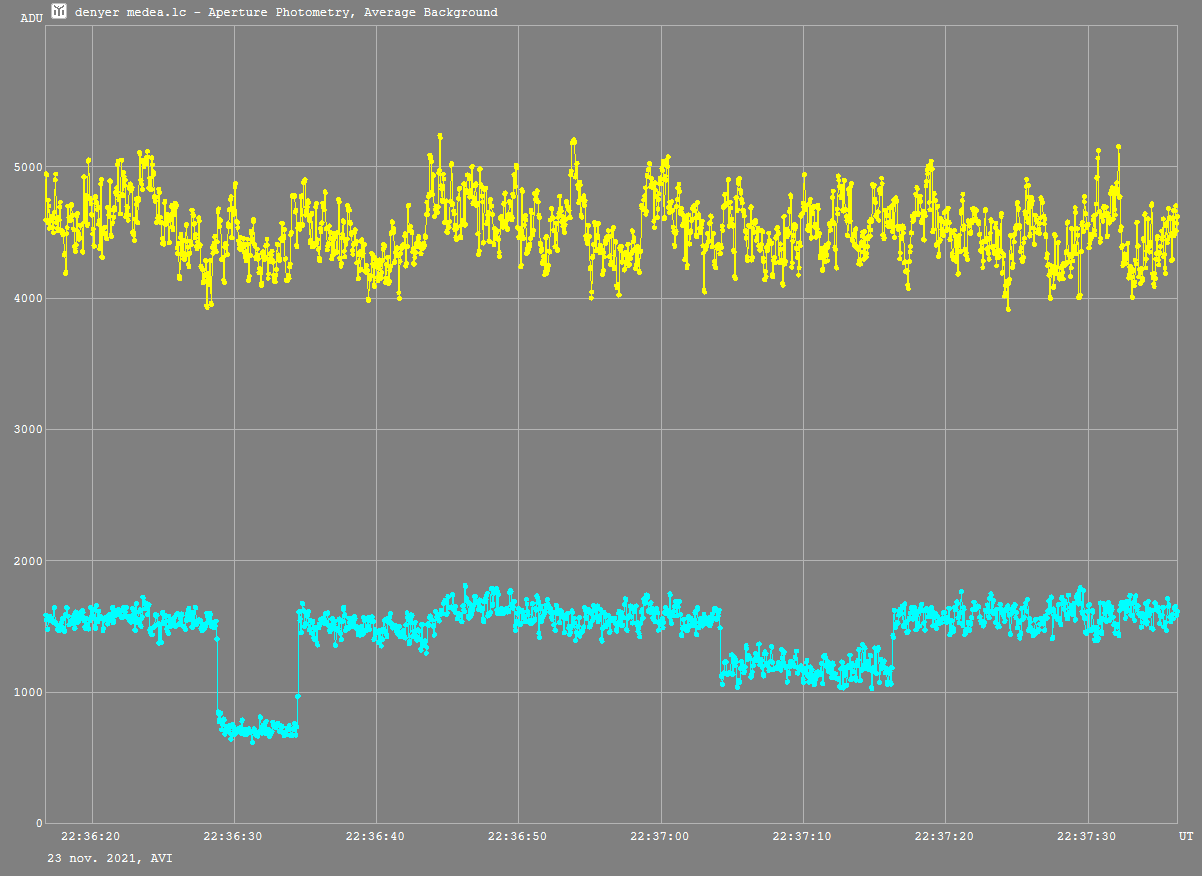Observation by Philip Denyer: Double star detection during asteroidal ...
Uploaded by
Philip Denyer
Observer
Philip Denyer
Observed
2021 Nov 23 - 22:36
Uploaded
2022 Feb 12 - 22:57
Objects
212 Medea
Equipment
Exposure
Integration 0.08 seconds
Location
Hornchurch, London, UK
Target name
(212) Medea occults TYC 1857_01108_1
Title
Double star detection during asteroidal occultation
About this image
This asteroidal occultation revealed the mag 10.4 mag target star to be double, as clearly shown by the light curve. Probability 35% for my location with a predicted duration of 13 seconds and a mag drop of 2.1. Results published on the European Asteroidal Results web page here. This unexpected outcome of a double star detection has been documented in the BAA February Journal pages 17-18. I have uploaded a short video to YouTube here showing the AVI of the observation.
Files associated with this observation
Like this image
Comments
Can you estimate the separation of the two components based on the time separation? The different widths of the transits indicate that the PA of the double is at a significant angle to the path of the asteroid.
Hello Paul. Yes the separation of the components can be estimated. This was detailed in the article about the observation in the February Journal here . I have quoted the figures that you are looking for below as calculated by Tim Haymes.
"Given the motion of the asteroid at the time amounted to 0.47arcsec/min in position angle 265°, we suggest an approximate separation of 0.3 arcseconds between components A and B of the double"
Regards
Phil
Copyright of all images and other observations submitted to the BAA remains with the owner of the work.
Reproduction of work by third parties is expressly forbidden without the consent of the copyright
holder. By submitting images to this online gallery, you grant the BAA permission to reproduce them in
any
of our publications.


